Countries
IPPOG
IPPOG Forum Members
South Africa

Intro
NRF-iThemba LABS (Laboratory for Accelerator Based Science)
At the tip of Africa lies the largest particle accelerator facility in the Southern Hemisphere and the only cyclotron facility of its kind on the African continent.
iThemba Laboratories for Accelerator Based Science (LABS), a research facility of the National Research Foundation (NRF), operates from sites located in Cape Town and Johannesburg offering applied and fundamental research capacity and infrastructure for accelerator-based sciences.
iThemba LABS has been producing radioisotopes for both the local and international market according to current Good Manufacturing Practice (cGMP) in specialised facilities and supplied for clinical application, for more than 30 years.
Details
JOINED: 2016
CURRENT STATUS: MEMBER
Science Engagement provides a vehicle to showcase the impact of our science within local communities as well as the school sector.
iThemba LABS is committed to advance knowledge, to transform lives, and to inspire a nation as we contribute to the betterment of society.
JOINED: 2016
CURRENT STATUS: MEMBER
Representative
Sahal Yacoob
Sahal’s completed a Masters degree in Theoretical Physics at the University of Cape Town in 2002, and prior to starting a PhD at Northwestern University, he worked briefly at the Lawrence Berkeley National Laboratory and Northwestern.
IPPOG
Members
Slovakia
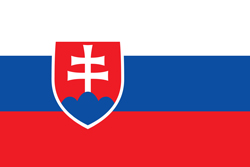
Intro
Research in high energy physics is carried out mainly at four institutes in Bratislava and Košice, and focuses on the ATLAS and ALICE experiments at the LHC. Research groups from Bratislava, active in nuclear structure studies, perform their experiments at ISOLDE facility at CERN. Smaller groups or individuals participate in other collaborations at CERN (NA49, NA57, NA62), and in experiments at other accelerator laboratories. Recent outreach events include International Particle Physics Masterclasses for high schools, a competition of videos about particles „Cascade“ projects, Physics tent at Pohoda, the largest music festival in Slovakia and a virtual visit of ATLAS experiment.
Details
Výskum fyziky vysokých energií prebieha predovšetkým na FMFI UK a FÚ SAV v Bratislave a na PF UPJŠ a ÚEF SAV v Košiciach. Zameriava sa na experimenty ATLAS a ALICE na LHC. Výskumná skupina z FÚ SAV v Bratislave, ktorá študuje štruktúru jadier, vykonáva svoje experimenty na zariadení ISOLDE v CERNe. Menšie skupiny alebo jednotlivci sa zúčastňujú ďalšej spolupráce v CERN (experimenty NA49, NA57, NA62) a na experimentoch v iných laboratóriách. Popularizačné podujatia zahŕňajú Medzinárodné Masterclasses pre stredné školy, súťaž videí z fyziky „Cascade“, fyzikálny program na hudobnom festivale Pohoda a virtuálnu návštevu experimentu ATLAS.
Representative
Ivan Melo
Ivan studied experimental nuclear physics at Comenius University in Bratislava and theoretical particle physics at Carleton University in Ottawa, Canada. After his return to Slovakia he accepted a position in the Department of Physics, University of Žilina. Ivan became involved in the organization of the first International Masterclasses in 2005 and fell in love with the program. "It has all I enjoy in particle physics - theory, real experimental data, team work, international collaboration and work with young keen minds.
IPPOG
Members
Portugal
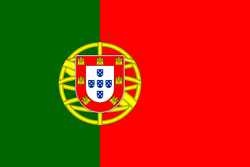
Intro
Particle physics outreach in Portugal is mainly pursued by LIP, the Laboratory for Instrumentation and Experimental Particle Physics. LIP is a nation-wide research institute with 3 nodes associated with the universities of Lisbon, Coimbra and Minho, and connections to other universities. It covers areas of experimental physics, collaborating in particle and astroparticle experiments at CERN and around the world, radiation detectors and technological developments for particle physics, and their application to societal issues. LIP also collaborates with theoretical groups around the country.
Details
A divulgação da física de partículas é atualmente feita sobretudo pelo LIP - o Laboratório de Instrumentação e Física Experimental de Partículas. O LIP é um Laboratório Associado de âmbito nacional, com 3 pólos associados às universidades de Lisboa, Coimbra e Minho, e ligações a outras universidades portuguesas. O seu programa cobre uma vasta área de física experimental, em que colabora em experiências de física de partículas no CERN e à volta do mundo, detetores de radiação e desenvolvimentos tecnológicos associados à física de partículas, bem como a sua aplicação a áreas de interesse societal. Para além disto, o LIP desenvolve atividades em colaboração com vários grupos de física teórica em Portugal.
Portuguese Physical Society: https://fisica-particulas.spf.pt
JOINED: 2016
CURRENT STATUS: MEMBER
Representative
Ricardo Goncalo
Ricardo is an assistant professor at the University of Coimbra and a researcher at LIP, the Portuguese Laboratory for Instrumentation and Particle Physics. He obtained his PhD at Imperial College London, on deep inelastic e-p scattering with the ZEUS experiment, in DESY. At Imperial he took part in Particle Physics Masterclasses, before they became international. That’s when he became enthusiastic about science outreach, which he views as an important part of the research endeavour… and great fun!
IPPOG
Members
Poland
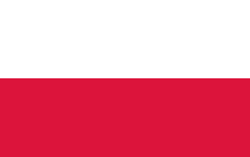
Intro
In Poland the particle physics research is concentrated in two biggest cities, Warszawa and Krakow, but there are also smaller groups in Kielce, Lodz and Wroclaw. The leading institutions are: AGH University of Science and Technology and Institute of Nuclear Physics Polish Academy of Sciences (Krakow), National Centre for Nuclear Research (Warszawa and Lodz), University of Warsaw and Warsaw University of Technology (Warszawa).
Polish physicists take part in many different experiments. At CERN they are among members of all large experiments at LHC: ALICE, ATLAS and LHCb (Krakow) ALICE and CMS (Warszawa), but also in NA61/SHINE. Similar studies are also performed at lower collisions energies available from smaller accelerator for STAR experiment (in USA) and Belle II experiment (in Japan). Other groups work in neutrino experiments in Japan (T2K, Super Kamiokande), USA (Minos) and Russia (Baikal GVD). There is also extensive involvement in cosmic-ray studies in observatories on the ground (Auger, HESS, HAWC, CTA and CREDO) or in satellites in the space.
All universities and research institutes organize outreach activities. Physicists from Krakow, Lodz, Poznan and Warszawa are involved in the International Masterclasses for high school students. Each year over 500 of them can listen to lectures and perform the measurements using the data from LHC experiments. They also take part in public events like Scientific Picnic in Warszawa or Researchers Night in Krakow.
Details
JOINED: 2016
CURRENT STATUS: MEMBER
Fizyka cząstek elementarnych jest rozwijana w Polsce głównie w dwu największych miastach: w Warszawie i w Krakowie, ale są mniejsze grupy w Kielcach, Łodzi i Wrocławiu. Wiodącymi instytucjami są: Akademia Górniczo-Hutnicza i Instytut Fizyki Jądrowej PAN (w Krakowie) Narodowe Centrum Badań Jądrowych (w Warszawie i Łodzi) oraz Uniwersytet Warszawski i Politechnika Warszawska.
Polscy fizycy biorą udział w wielu różnorodnych eksperymentach. W CERN są wśród członków wszystkich większych eksperymentów działających przy Wielkim Zderzaczu Hadronów (LHC): ALICE, ATLAS i LHCb (Kraków) ALICE i CMS (Warszawa), ale także innych, np. eksperymentu NA61/SHINE. Prowadzą również badania przy niższych energiach zderzeń w eksperymencie STAR (w USA) i Belle II (w Japonii). Inne grupy pracują w eksperymentach neutrinowych w Japonii (T2K, Super Kamiokande), w USA (Minos) i w Rosji (Baikal GVD). Bardzo istotny wkład wnoszą w badania promieniowania kosmicznego obserwatoriach na ziemi (Auger, HESS, HAWC, CTA i CREDO) oraz wykorzystując satelity.
Wszystkie uczelnie i instytuty badawcze prowadzą działalność popularyzatorską. Fizycy z Krakowa, łodzi, Poznania i Warszawy prowadzą warsztaty dla uczniów szkół średnich w ramach International Masterclasses. Każdego roku ponad 500 uczniów może wysłuchać wykładów o fizyce cząstek elementarnych i dokonać pomiarów korzystając z danych dostarczonych przez eksperymenty LHC. Organizowane są też wydarzenia dla szerszej publiczności takie jak coroczny Piknik Naukowy w Warszawie czy Noc Naukowców w Krakowie
JOINED: 2016
CURRENT STATUS: MEMBER
Representative
Krzysztof Wozniak
High energy particle physics has been an important repeating theme in Krzysztof’s scientific path. Krzysztof’s PhD thesis was based on the data collected from measurements in the nuclear emulsion - a technique known already since before 1940, but which nowadays is still used in neutrino experiments. Later he started to work in experiments with detectors full of electronic devices that would process data with computers. Here he was able to fully apply his skills gained during computer science studies, and his interest in HEP experiments continued to grow.
IPPOG
Members
Norway
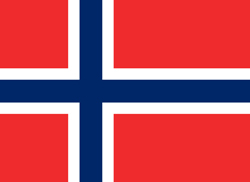
Intro
Content to be provided
Details
JOINED: 2016
CURRENT STATUS: MEMBER
Content in local language to be provided
JOINED: 2016
CURRENT STATUS: MEMBER
Representative
Farid Ould-Saada
IPPOG
IPPOG Forum Members
The Netherlands
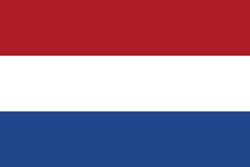
Intro
In the Netherlands, (astro)particle physics is coordinated by Nikhef, which is a collaborations between the NWO-I institute for subatomic physics and six universities. Within Nikhef, ~75 technicians and engineers, ~185 physicists and ~25 support staff work together which enables the institute to engage in the design and building of detectors, the analysis of the data from these detectors, and the development of scientific theories. Nikhef has a long history in outreach, with participation in Masterclasses, open days, high school visits, etc. These events are organised by the Nikhef scientists and the communications department. Nikhef was the first organisation signing the IPPOG MoU in 2016.
Details
JOINED: 2016
CURRENT STATUS: MEMBER
Het (astro)deeltjes onderzoek in Nederland wordt gecoördineerd door Nikhef. Nikhef is een samenwerkingsverband tussen het NWO-I instituut voor sub-atomaire fysica en zes universiteiten. Binnen Nikhef werken ~75 technici en ingenieurs, ~185 fysici, en ~25 ondersteunend personeel samen, waardoor het instituut in staat is om detectoren te ontwerpen en bouwen, de data uit deze detectoren te analyseren, en wetenschappelijke theorieën te ontwikkelen. Nikhef heeft een lange geschiedenis in outreach, met deelname aan Masterclasses, open dagen, bezoeken aan middelbare scholen, enz. Deze activiteiten worden door wetenschappers samen met de afdeling communicatie georganiseerd. Nikhef was de eerste organisatie die in 2016 het IPPOG MoU ondertekend heeft.
JOINED: 2016
CURRENT STATUS: MEMBER
Representative
Charles Timmermans
Charles is a senior researcher at Nikhef, the national institute for subatomic physics in the Netherlands. He received his PhD in physics in 1992 for his work in the L3 experiment at the LEP collider in CERN. Afterwards, he took up a post-doctoral fellowship at the University of Michigan in preparation of the superconducting supercollider. In 1994 Charles started working at the University of Minnesota, measuring the anomalous magnetic moment of the muon at the AGS in Brookhaven.
IPPOG
IPPOG Forum Members
Italy

Intro
The Italian research agency dedicated to the study of the fundamental constituents of matter and the laws that govern them, under the supervision of the Ministry of Education, Universities and Research (MIUR), is the Italian National Institute for Nuclear Physics (INFN). It conducts theoretical and experimental research in the fields of subnuclear, nuclear and astroparticle physics. Groups from the Universities of Rome, Padua, Turin, and Milan founded the INFN on 8thAugust 1951 to uphold and develop the scientific tradition established during the 1930s by Enrico Fermi and his school, with their theoretical and experimental research in nuclear physics. In the latter half of the 1950s, INFN designed and built the first Italian accelerator, the electron synchrotron developed in Frascati, where its first national laboratory was set up. During the same period, INFN began to participate in research into the construction and use of ever-more powerful accelerators being conducted by CERN, in Geneva. Today INFN employs some 6000 scientists whose work is recognized internationally not only for their contribution to various European laboratories, but also to numerous research centres worldwide. All of INFN’s research activities are undertaken within a framework of international competition, in close collaboration with Italian universities on the basis of solid academic partnerships spanning decades.
As an Institution working on cutting-edge scientific issues, INFN has a significant impact on the progress of knowledge, on technological development and on the economy of the country. Aware of this role, and of the fact that it is the duty of a public body to share its activities and the results that derive from them with society, the Institute is increasingly committed to outreach and public engagement. The Institute plays an important role in the communication of physics at the national and local level, by promoting, designing and implementing initiatives for the dissemination and promotion of scientific culture, both for the general public and for specific targets. In addition to traditional initiatives, it studies and experiments new forms of communication, emphasizing the fundamental relationship between physics and other areas of knowledge. The Institute also contributes a lot to the training of high school students through scholarships, internships, teacher training and school-work projects.
Details
In Italia IPPOG è rappresentato dall’Istituto Nazionale di Fisica Nucleare (INFN). L’INFN è l’ente pubblico nazionale di ricerca, vigilato dal Ministero dell’Istruzione, dell’Università e della Ricerca (MIUR), dedicato allo studio dei costituenti fondamentali della materia e delle leggi che li governano. Svolge attività di ricerca, teorica e sperimentale, nei campi della fisica subnucleare, nucleare e astroparticellare. Le attività di ricerca dell’INFN si svolgono tutte in un ambito di competizione internazionale e in stretta collaborazione con il mondo universitario italiano, sulla base di consolidati e pluridecennali rapporti. La ricerca fondamentale in questi settori richiede l’uso di tecnologie e strumenti di ricerca d’avanguardia, che l’INFN sviluppa sia nei propri laboratori sia in collaborazione con il mondo dell’industria.
L’INFN è stato istituito l’8 agosto 1951 da gruppi delle Università di Roma, Padova, Torino e Milano al fine di proseguire e sviluppare la tradizione scientifica iniziata negli anni ‘30 con le ricerche teoriche e sperimentali di fisica nucleare di Enrico Fermi e della sua scuola. Nella seconda metà degli anni ’50, l’INFN ha progettato e costruito il primo acceleratore italiano, l’elettrosincrotrone realizzato a Frascati dove è nato anche il primo Laboratorio Nazionale dell’Istituto. Nello stesso periodo è iniziata la partecipazione dell’INFN alle attività di ricerca del CERN, il Centro europeo di ricerche nucleari di Ginevra, per la costruzione e l’utilizzo di macchine acceleratrici sempre più potenti. Oggi l’ente conta circa 6000 scienziati il cui contributo è riconosciuto internazionalmente non solo nei vari laboratori europei, ma in numerosi centri di ricerca mondiali.
JOINED: 2007
CURRENT STATUS: MEMBER
JOINED: 2017
Representative
Catia Peduto
Catia joined the Communications Office of the Italian National Institute for Nuclear Physics (INFN) in 2004. Having graduated in Mathematics at the Rome University “La Sapienza” (2002) she then achieved a Master in Science Communications in Milan (2003). Since 2007 she has also officially been recognised as a journalist. At INFN Catia has been working on the creation and organisation of exhibitions and of several outreach events on Particle Physics.
IPPOG
Members
Israel

Intro
Content to be provided
Details
JOINED: 2016
CURRENT STATUS: MEMBER
Content in local language to be provided
JOINED: 2016
CURRENT STATUS: MEMBER
Representative
Ehud Duchovni
Content to be provided
IPPOG
Members
France

Intro
In France, introducing young people and the general public to basic science (nuclear physics, physics of elementary particles, cosmology and astrophysics), the technological advances they require and their related applications (energy, health, etc.), is a key mission for the 25 CNRS/IN2P3 national research laboratories and platforms, and the CEA/IRFU. Our educational and outreach activities are carried out in close collaboration to teaching staff and take many forms: visit to laboratories, “Masterclass” discovery days, teacher-training courses, loans of cosmic-ray detectors for use in classrooms, teaching aids, exhibitions, websites, virtual visits, audiovisual productions, books, etc.
Our goal: to give people a taste for science and physics
Details
JOINED: 2016
CURRENT STATUS: MEMBER
LOCAL RESOURCES WEBSITE(S)
CNRS/IN2P3 Outreach and Communication Page
En France, la diffusion vers les jeunes (élèves ou étudiants) et le grand public de branches de la recherche fondamentale (physique nucléaire, physique des particules, cosmologie et astrophysique), des avancées technologiques qu’elles nécessitent et de leurs applications sociétales (dans le domaine de l’énergie, de la santé, etc.) est une mission clef des 25 laboratoires de recherche et plateformes nationaux du CNRS/IN2P3 et du CEA/IRFU. Nos activités pédagogiques et de vulgarisation se déroulent en partenariat avec les enseignants et prennent des formes très différentes : visites de laboratoire, journées de découverte « Masterclasses », formations d’enseignants, prêts de détecteurs pédagogiques de muons cosmiques utilisés en classe, supports d’enseignements, expositions, sites internet, visites virtuels, production de contenus audio-visuels, livres, etc.
Notre but : donner aux gens le goût de la science et de la physique
JOINED: 2016
CURRENT STATUS: MEMBER
Representative
Nicolas Arnaud
After earning a PhD in the Virgo experiment (direct detection of gravitational waves) and spending a year as a CERN fellow with the LHCb collaboration, Nicolas joined the Centre National de la Recherche Scientific (IN2P3/CNRS) in Orsay as a staff physicist. He then began working on the BaBar experiment and for this spent four years at SLAC in California. Upon returning to France in 2009, he got involved in SuperB, the Italian-based project of a new generation super flavour factory, until that endeavor got terminated due to lack of funding.
IPPOG
Members
Finland

Intro
The Helsinki Institute of Physics (HIP) is a physics research institute that is operated jointly by the University of Helsinki, Aalto University, the University of Jyväskylä, the Lappeenranta-Lahti University of Technology, and the Tampere University. The research activity at the institute covers an extensive range of subjects in theoretical physics and experimental subatomic physics. The mandate of the institute is to carry out and facilitate research in basic and applied physics as well as in physics research and technology development at international accelerator laboratories. The institute is responsible for the Finnish research collaboration with CERN. Also, the institute coordinates the Finnish contribution to the FAIR laboratory (Facility for Antiproton and Ion Research) currently under construction in Darmstadt, Germany.
The Helsinki Institute of Physics organises continuing education for Finnish subject teachers as well as science camps for Finnish general upper secondary school pupils at CERN. HIP’s three-year Education and Open Data project is responsible for the above activities and their development. The project uses CERN’s open data in comprehensive and general upper secondary education and trains Finnish teachers throughout Finland in the use of open data and tools. Each year, approximately 15 students from Finnish universities and other higher education institutions participate in HIP’s summer traineeship programme at CERN and ESRF. The summer trainees typically acquire three months of international work experience and have the opportunity to participate in top-level scientific lectures aimed at the trainees.
The CERN Bootcamp, intended for master’s students, was organised together with three universities of applied sciences in summer 2018 and 2019, and another bootcamp is being planned for 2022. The places for Bootcamp are filled with 20 master’s degree students from Haaga-Helia/Laurea/Metropolia and 2-5 students from Universities of Helsinki/Aalto/Jyväskylä/Lappeenranta-Lahti/Tampere. During the bootcamp, students work in groups to resolve current societal problems that often relate to sustainability.
Details
JOINED: 2016
CURRENT STATUS: MEMBER
Fysiikan tutkimuslaitos (HIP) on Helsingin yliopiston, Aalto-yliopiston, Jyväskylän yliopiston, Lappeenrannan teknillisen yliopiston ja Tampereen teknillisen yliopiston yhteinen tutkimuslaitos. Laitos toimii hallinnollisesti Helsingin yliopiston yhteydessä. Fysiikan tutkimuslaitoksessa tehdään sekä teoreettisen että kokeellisen hiukkasfysiikan perustutkimusta. Laitos huolehtii Suomen yhteistyöstä perustutkimuksessa ja soveltavassa tutkimuksessa sekä teknologiakehityksessä kansainvälisten kiihdytinlaboratorioiden kanssa. Laitos on vastuussa Suomen yhteistyöstä Euroopan ydinfysiikan tutkimusjärjestön CERNin kanssa. Laitos koordinoi myös Suomen osallistumista Darmstadtiin rakenteilla olevan FAIR laboratorion toimintaan. Fysiikan tutkimuslaitos organisoi suomalaisten aineopettajien jatkokoulutusta ja lukiolaisten tiedeleirejä CERNissä.
Fysiikan tutkimuslaitoksen kolmevuotinen Opetus ja Avoin data -ohjelma on vastuussa näistä aktiviteeteista ja niiden kehityksestä. Ohjelma käyttää CERNin avointa dataa oppilaitten opetukseen, ja kouluttaa opettajia ympäri Suomen käyttämään avointa dataa ja niihin liittyviä työkaluja. Vuosittain noin 15 opiskelijaa suomalaisista yliopistoista ja korkeakouluista osallistuu kesäharjoitteluohjelmaan CERNissä ja ESRF:ssä (European Synchrotron Radiation Facility Grenoblessa, Ranskassa). Kesäharjoittelijat tekevät tyypillisesti kolme kuukautta töitä saaden kansainvälistä työkokemusta, ja heillä on mahdollisuus osallistua korkeatasoisille harjoittelijoille suunnattuille luennoille.
CERN Bootcamp, joka on tarkoitettu maisteriohjelmissa opiskeleville opiskelijoille, järjestettiin yhdessä kolmen ammattikorkeakoulun kanssa kesällä 2018 ja 2019. Seuraava Bootcamp on tarkoitus järjestää 2022. Bootcamp:iin otetaan 20 maisteriohjelmissa opiskelevaa opiskelijaa Haaga-Helia/Laurea/Metropolia ammattikorkeakouluista, ja 2-5 opiskelijaa Helsinki/Aalto/Jyväskylä/Lappeenranta-Lahti/Tampere yliopistoista. Bootcampissä opiskelijat työskentelevät ryhmissä ratkoen ajankohtaisia yhteiskunnallisia ongelmia, jotka usein liittyvät kestävään kehitykseen.
JOINED: 2016
CURRENT STATUS: MEMBER
Representative
Sami Lehti
Sami has been a member of the CMS collaboration from 1996. He has specialized on CMS data analysis, search for a Higgs boson with an electric charge, tau physics objects and tau trigger. He has a Title of Docent from experimental particle physics from the University of Helsinki, and he is a senior scientist at the Helsinki Institute of Physics. He has organized Higgs weekends in science centers Heureka (Vantaa, Finland) and Tietomaa (Oulu, Finland), given public lectures, organized Particle Physics Workshops on SciFest (Joensuu, Finland) and written popularized articles.

